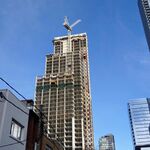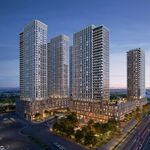What’s been the been cost per mile of new U.S. light rail transit (LRT) “starter systems†installed in recent years?
The
Light Rail Project team was curious about this, so we’ve reviewed available data sources and compiled a tabulation comparing cost-per-mile of “heavy-duty†LRT starter systems installed in or after 1990, all adjusted to 2014 dollars for equivalency. (“Heavy-duty†distinguishes these systems from lighter-duty streetcar-type LRT projects.)
This is shown in the figure below, which presents, for each system, the year opened, the initial miles of line, the cost per mile in millions of 2014 dollars, and comments on significant construction features. (“RR ROW†refers to available railroad right-of-way; “street track†refers to track embedded in urban street pavement, almost invariably in reserved lanes or reservations.)

Major data sources have included TRB/APTA 8th Joint Conference on Light Rail Transit (2000), individual LRN articles, and Wikipedia.
Averaging these per-mile cost figures is not meaningful, because of the wide disparity in types of construction, ranging from installation of ballasted open track in railroad right-of-way (lowest-cost) to tunnel and subway station facilities (highest-cost). These typically respond to specific conditions or terrain characteristics of the desired alignment, and include, for example:
•
Seattle — While Seattle’s Link LRT is by far the priciest system in this comparison, there are explanatory factors. Extensive modification of existing Downtown Seattle Transit Tunnel (and several stations) previously used exclusively by buses; tunneling through a major hill, and installation of a new underground station; extensive elevated construction to negotiate hilly terrain, major highways, etc.
•
Dallas — This starter system’s costs were pushed up by a long tunnel beneath the North Central Expressway (installed in conjunction with an ongoing freeway upgrade), a subway station, a new viaduct over the Trinity River floodplain, and significant elevated construction.
•
Los Angeles — The Blue Line starter system included a downtown subway station interface with the Red Line metro and a short section of subway before reaching the surface of proceed as street trackage and then open ballasted track on a railroad right-of-way.
•
St. Louis — While this system’s costs were minmimized by predominant use of former railroad right-of-way, a downtown freight rail tunnel was rehabilitated to accommodate the system’s double-track LRT line, with stations; an existing bridge over the Mississippi River was adapted; and significant elevated facilities were installed for access to the metro area’s main airport.
Hopefully this cost data may be helpful to other communities, in providing both a “ballpark†idea of the unit cost of new LRT, and a reality check of any estimated investment cost already rendered of such a new system. ■





